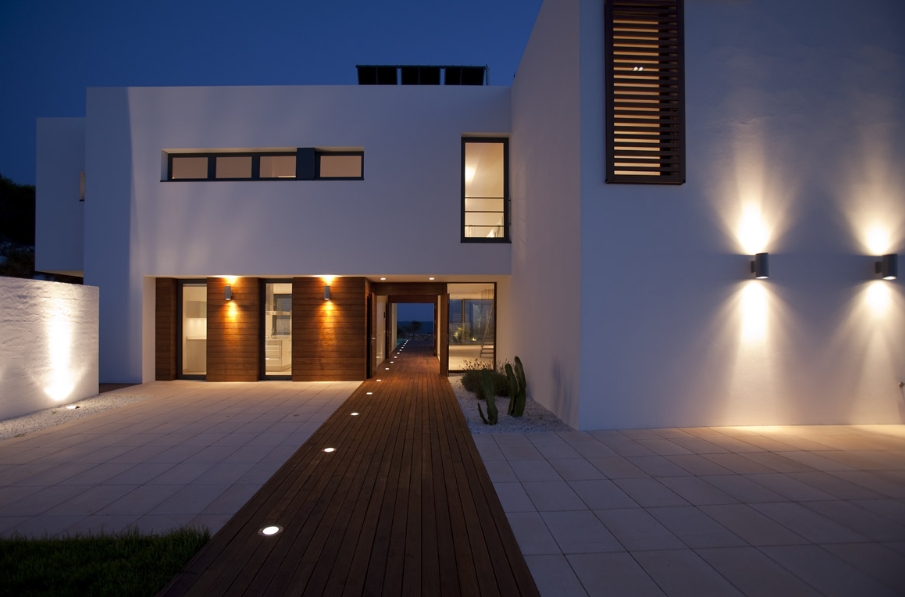Introduction
Outdoor lighting serves multiple critical functions for any property. It enhances the aesthetic appeal, boosts the property’s value, and most importantly, improves safety and security. Properly illuminating your property can deter crime, prevent accidents, and create a welcoming environment. This blog will explore the best practices for outdoor lighting safety, ensuring your property is both beautiful and secure. Additionally, for landlords in London, obtaining a Gas Landlord Certificate London is crucial to ensure the safety of tenants and compliance with local regulations.
Understanding the Importance of Outdoor Lighting
Outdoor lighting is essential for several reasons:
- Deterrence of Crime: Well-lit properties are less attractive to criminals. Proper illumination reduces hiding spots and increases the chances of detection, thereby deterring potential intruders.
- Prevention of Accidents: Adequate lighting around pathways, stairs, and driveways helps prevent trips, falls, and other accidents, ensuring the safety of residents and visitors.
- Enhancement of Aesthetic Appeal: Thoughtful lighting design can highlight architectural features, landscaping, and other aspects of your property, creating a pleasant and inviting atmosphere.
- Increased Usability: Good lighting allows you to utilize outdoor spaces after dark, making areas like patios, gardens, and pools more accessible and enjoyable.
Best Practices for Outdoor Lighting Safety
To maximize the safety benefits of outdoor lighting, consider the following best practices:
1. Assess Your Property
Before installing outdoor lighting, conduct a thorough assessment of your property. Identify areas that need illumination, such as:
- Entrances and exits
- Pathways and walkways
- Driveways and parking areas
- Stairs and steps
- Dark corners and secluded spots
- Outdoor structures (garages, sheds, etc.)
- Perimeter boundaries
Understanding your property’s layout and identifying high-risk areas will help you create a comprehensive lighting plan.
2. Choose the Right Lighting Fixtures
Selecting the appropriate lighting fixtures is crucial for both functionality and safety. Here are some popular options:
- Floodlights: Ideal for illuminating large areas such as driveways, backyards, and parking lots. They provide broad, powerful light coverage.
- Spotlights: Focused beams that highlight specific features or areas, such as entryways or landscape elements.
- Path Lights: Low-level lights that outline walkways, paths, and garden edges, providing guidance and preventing trips and falls.
- Motion Sensor Lights: These lights automatically turn on when movement is detected, offering an energy-efficient way to enhance security and deter intruders.
- Wall-Mounted Lights: Installed on exterior walls to light up entryways, patios, and other adjacent areas.
- Solar Lights: Eco-friendly options that harness solar energy, suitable for areas where wiring is difficult or impractical.
Ensure that the fixtures you choose are weather-resistant and designed for outdoor use to withstand various environmental conditions.
3. Optimal Placement of Lights
Strategic placement of lights is essential for effective illumination. Here are some tips for optimal placement:
- Entry Points: Position lights near all entry points, including front and back doors, garage doors, and windows. Ensure these areas are well-lit to discourage unauthorized access.
- Pathways and Walkways: Install lights along paths and walkways to guide movement and prevent accidents. Space them evenly to avoid dark patches.
- Driveways and Parking Areas: Use floodlights or motion sensor lights to illuminate driveways and parking spaces, ensuring safe navigation and vehicle security.
- Stairs and Steps: Place lights on or near stairs and steps to enhance visibility and reduce the risk of falls.
- Dark Corners and Secluded Spots: Eliminate shadows and potential hiding spots by lighting up dark corners and secluded areas around your property.
- Perimeter: Install lights along the perimeter of your property to establish a visible boundary and deter trespassers.
4. Utilize Motion Sensors and Timers
Motion sensor lights and timers are excellent tools for outdoor lighting safety.
- Motion Sensors: These lights automatically activate when they detect movement, startling potential intruders and conserving energy by only lighting up when necessary.
- Timers: Timers can be set to turn lights on and off at specific times, ensuring your property is lit during critical hours, even if you are not home.
Combining motion sensors and timers provides a balance of security, convenience, and energy efficiency.
5. Consider Light Intensity and Color
The intensity and color of your outdoor lights can impact safety and visibility:
- Intensity: Avoid overly bright lights that create harsh glare and deep shadows. Opt for moderate-intensity lights that provide sufficient illumination without causing discomfort.
- Color: Choose lights with a warm color temperature (2700K-3000K) for general areas to create a welcoming ambiance. For security purposes, cooler white lights (3000K-5000K) are effective as they offer better visibility and contrast.
6. Regular Maintenance
Regular maintenance ensures your outdoor lighting system remains effective and safe:
- Check for Damage: Periodically inspect all lighting fixtures for damage, corrosion, or wear. Replace or repair any faulty components promptly.
- Clean Fixtures: Clean lenses and fixtures to remove dirt, debris, and insect nests that may obstruct light output.
- Trim Vegetation: Ensure that plants, shrubs, or trees do not block the light or interfere with the sensor functions.
- Replace Bulbs: Replace burnt-out or dimming bulbs to maintain consistent illumination.
7. Energy Efficiency
Consider energy-efficient lighting options to reduce costs and environmental impact:
- LED Lights: LED bulbs are long-lasting, consume less energy, and provide bright, clear light. They are ideal for outdoor use.
- Solar Lights: Utilize solar-powered lights in areas with adequate sunlight exposure. They charge during the day and illuminate at night without relying on electricity.
- Smart Lighting Systems: Invest in smart lighting systems that allow remote control and automation, optimizing energy usage and enhancing convenience.
8. Consult a Professional
For complex lighting installations or if you are unsure about the best approach for your property, consult a professional lighting designer or electrician. They can provide expert advice, ensure proper installation, and help you achieve the desired balance of safety, functionality, and aesthetics.
Conclusion
Outdoor lighting is a vital component of property safety and security. By following these best practices, you can create a well-lit environment that deters crime, prevents accidents, and enhances the overall appeal of your property. Remember, a well-planned lighting system not only protects your property but also adds value and enjoyment to your outdoor spaces. Illuminate wisely and enjoy the benefits of a safer, more inviting property. Additionally, for landlords seeking to ensure the safety of their properties, obtaining Landlord Certification is essential for compliance with safety regulations and the peace of mind of tenants.If you want to stay updated with posts like this, please follow us on DODBUZZ.







